All About Pine Nuts
This article discusses everything you want to know about Pine Nuts, from a FODMAP perspective and beyond. Learn about which ones to buy – and why. And we have several recipes featuring pine nuts linked below that go beyond the classic Basil Pesto (although we have that, too).
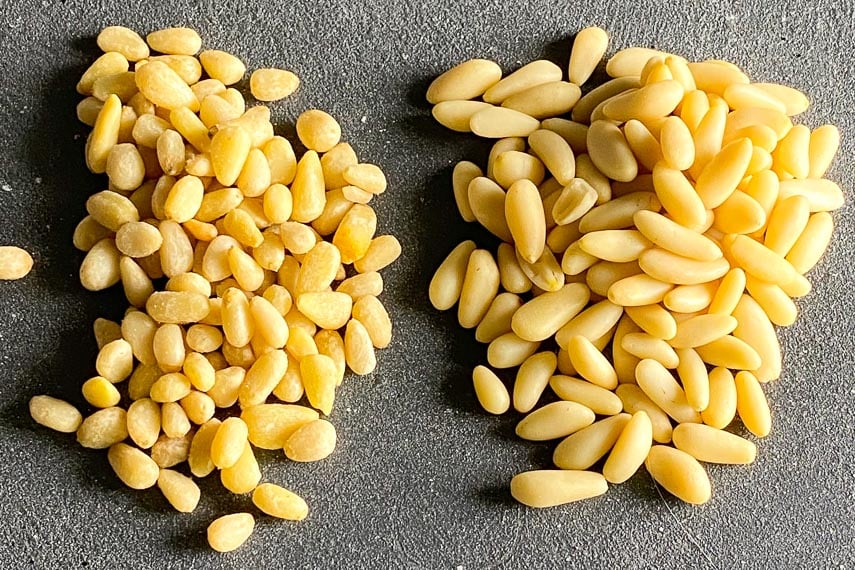
Pine Nuts & FODMAPs
Monash University has lab tested pine nuts and they have a low FODMAP serving size of 1 Australian tablespoon (14 g) and become high FODMAP at 100 g, which is about ½ cup.
Pine nuts are used in classic Genovese style basil pesto, and we have a fantastic recipe for you, but they can also be used in cookies, muffins, tossed into salads or trail mix, and added to savory sautéed dishes, such as our Pasta With Sun-Dried Tomatoes, Chickpeas & Artichokes.
Be sure to see our basic recipe for Sun-Dried Tomato Pesto, as well.
Not All Pine Nuts Are Created Equal
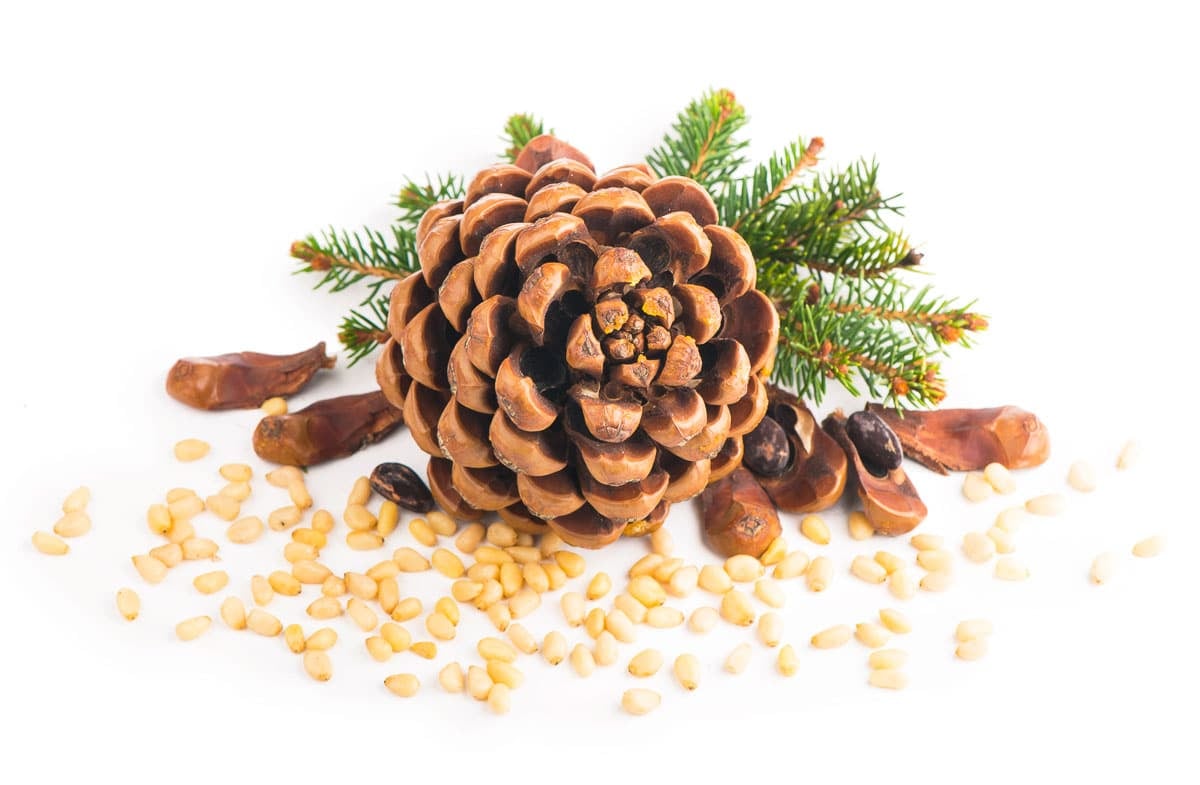
Did you know that not all pine nuts are created equal? On the one hand, the 18 or so species that are edible do all come from pinecones (yes, from pine trees) grown throughout North America, Europe and Asia.
But there are some that are much preferred from a culinary perspective over others.
About “Pine Nut Syndrome”
Perhaps you have heard about “pine nut syndrome” or “pine nut mouth”, perhaps not – or maybe you were a victim and didn’t even know what was going on?
Some people experience a bitter and/or unpleasant metallic taste after eating certain pine nuts and this effect seems to come mostly from the Pinus armandii (Chinese white pine) variety.
It is not a health concern other than it is annoying, making everything you eat taste odd, and can actually last for days – or weeks! It is referred to as “pine nut syndrome” and can crop up even a day or two after eating the offending pine nuts.
Our suggestion is to source pine nuts of European origin.
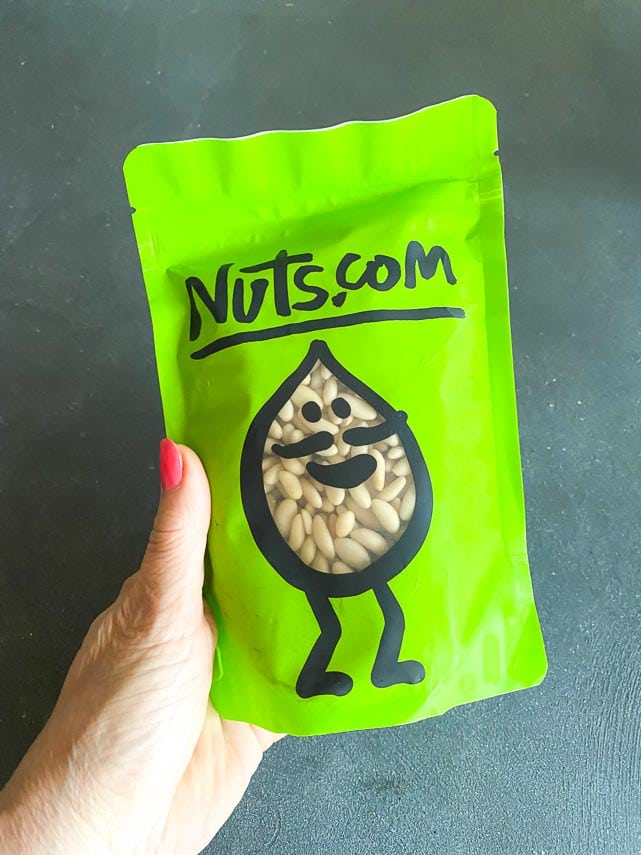
I have had very good luck with sourcing these nuts through Nuts.com where they specifically call them “Mediterranean Pine Nuts (Pignolias)”.
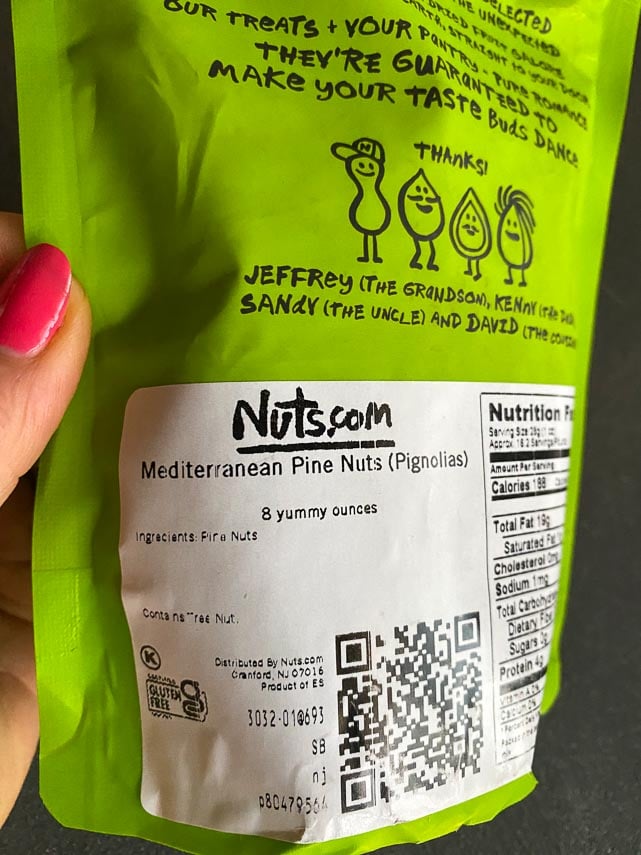
They also carry what they call simply “Pine Nuts” and those are not the kind we want.
Do note that the European type are always pricier. When I bought them recently (summer 2023) they were $44 for 8-ounces vs. $20 for the same amount of the Chinese ones. Note that our recipe uses less than 2-ounces of the nuts and serves at least 4, so you have to do the math after you experience sticker shock. (OK, I did it. It’s about $2.50 per serving).
Of course, if you don’t have an issue with pine nuts, you could buy the lesser expensive ones, but the way I look at it, I don’t want to take a chance. I usually make big batches of Basil Pesto in the summer and freeze it. I don’t want to serve it to guests somewhere along the line and be responsible for them having a reaction. But, it’s your choice!
How To Tell One Kind Of Pine Nut From Another
Acquaint yourself with the images here. The elegant, smooth, slender nuts on the right are the European ones. The shorter, stubbier, chubbier ones on the left are the Pinus armandii, Chinese type.
If a brand/label/product does not go out of its way to advertise that the nuts are the more expensive European variety, chances are they are not.
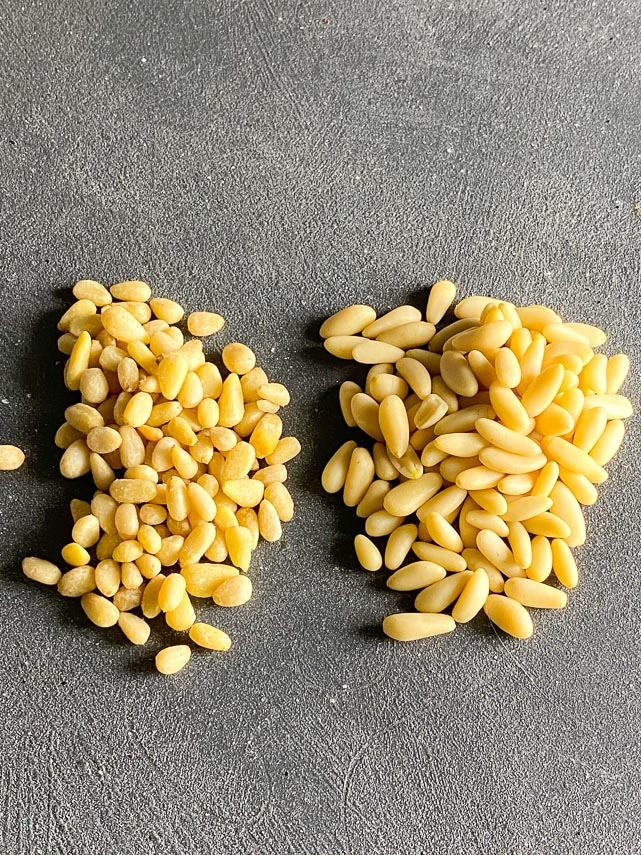
How Are Pine Nuts Harvested?
Pine nuts are the small edible seeds harvested from the cones of certain pine trees. When the seeds mature enough to be harvested, the pinecones are collected and dried and then processed to open (loosen and unfurl). The “scales” are separated and the pine kernels (nuts) are removed from the scales. There is one pine nut in each “scale”. It is an incredibly labor-intensive extraction procedure if done by hand. It can also be mechanized. Somehow understanding the labor involved makes the high cost of the shelled nuts more palatable.
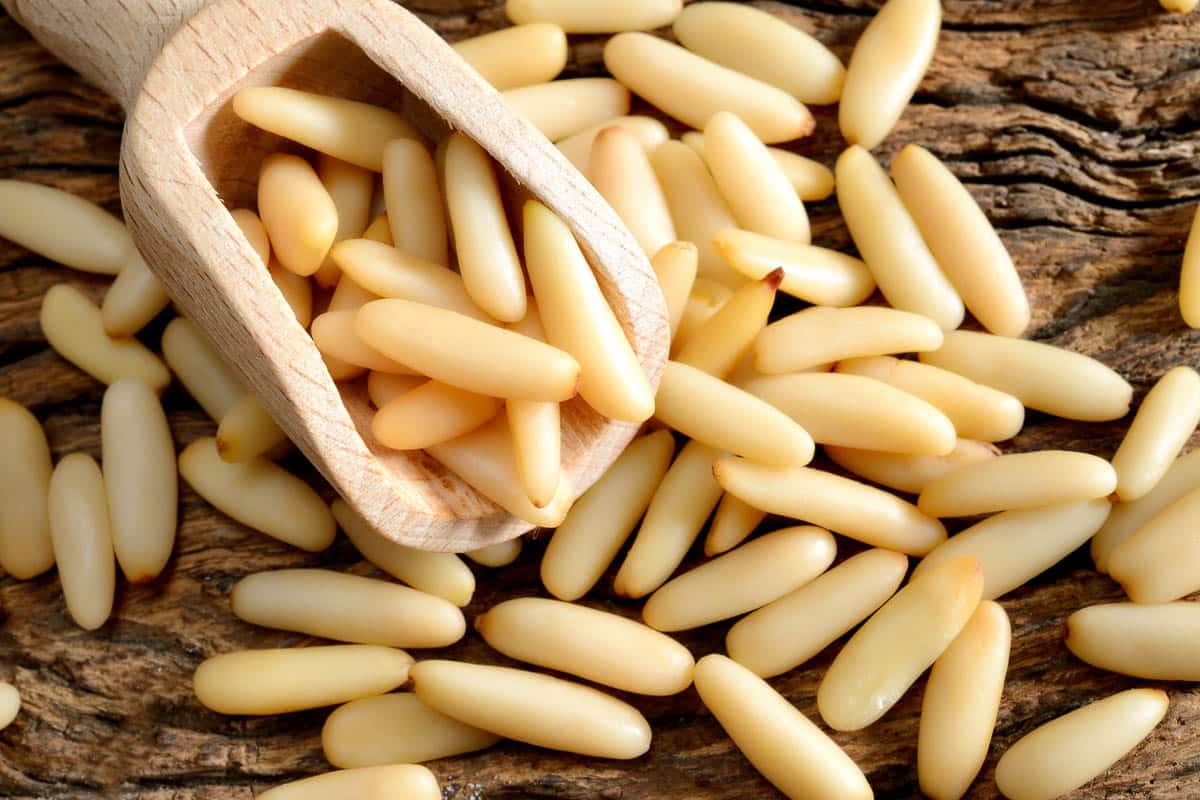
How To Store Pine Nuts
As with most nuts, pine nuts have a high oil (fat) content that can make them spoil quickly if they are not properly stored.
If you will be consuming within a couple of weeks, they can be stored at room temperature in an airtight bag or container. For longer storage of up to 3 months, you should refrigerate. For longer storage of up to about 9 months you can freeze them.
Pine Nut Recipes
Here are some of our recipes featuring pine nuts. And of course, using the 14 g per serving as a low FODMAP guide, feel free to get creative with them yourself.

